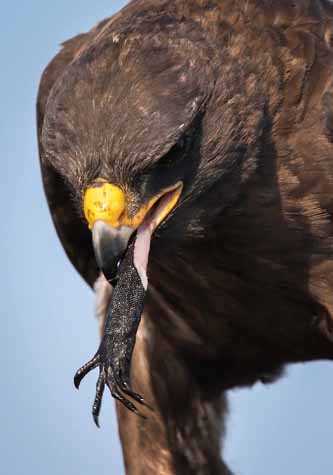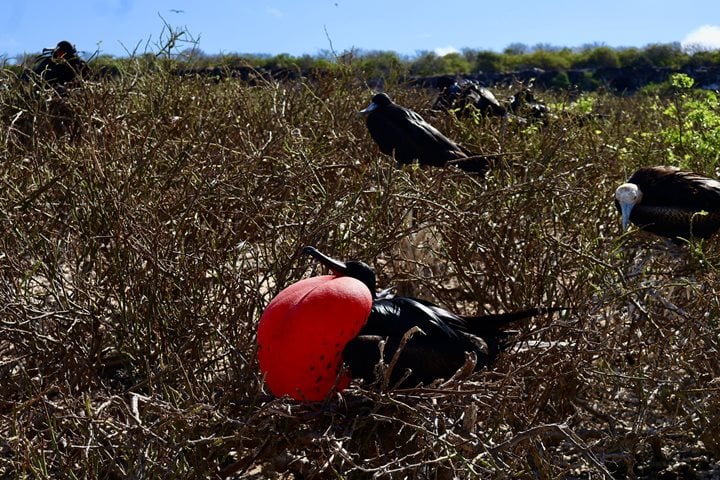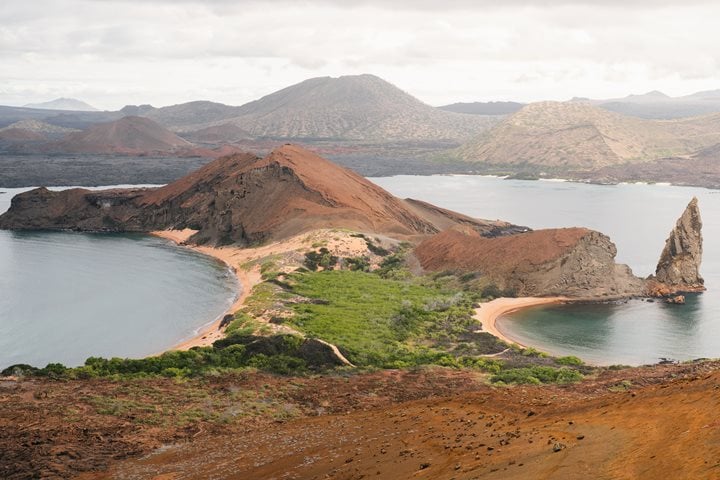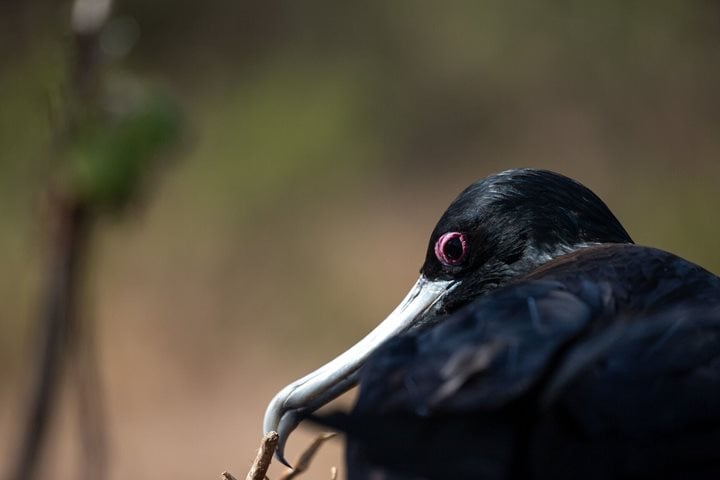After a night of navigation, we awoke in the western realm of the Galapagos, anchored in front of one of the most beautiful and pristine islands in the world, Fernandina. There is nothing quite as fascinating, at least in my opinion, as an island. In biogeographical terms, an island can be defined as an area of habitat suitable for a specific ecosystem, surrounded by an expanse of unsuitable habitat. These can be terrestrial islands, like mountain tops, oases, woody patches surrounded by cultivated land etc. These can be pieces of continental land mass that become isolated from the mainland by tectonic movements or rising water levels, starting life with a full complement of flora and fauna which gradually becomes impoverished. Or they can be true oceanic islands, remote pieces of land surrounded by large stretches of ocean, that rise up from below as the tips of huge submarine volcanoes, for example, starting life as barren stretches of lava that gradually become colonized from afar. Their inherent isolation means that the species making up these insular ecosystems receive no gene flow from external sources, and they tend to depart along their very own, often peculiar, evolutionary pathways. The more isolated an island, the less important the role of immigration becomes in contributing to its biodiversity and the greater the role of speciation. Williamson (1981) defined this concept as follows: “oceanic islands are where evolution is faster than immigration; continental islands are where immigration faster than evolution.”
The colonization potential of different plant and animal groups is directly proportional to their dispersal abilities – islands can be “continental” to some animal and plant groups and “oceanic” to others, and remote island groups are colonized by “sweepstake” dispersal. For example, amphibians and freshwater fish cannot colonize islands over 5 km away, larger mammals are restricted to 50 km, reptiles and rodents can colonize islands as remote as 1000 km away (as occurred in Galapagos) and land birds and bats have even managed to colonize Hawaii, over 3000 km away from the closest land mass! This results in one of the most fascinating attributes of remote island biotas: Disharmony, defined as a non-representative species composition compared to mainland ecosystems, since there will be over-representation of groups with better dispersal ability and under-representation of groups with less dispersal ability. The groups that have managed to colonise these remote areas are faced with a lack of competition and a great number of empty ecological niches, so they typically undergo character release and spectacular adaptive radiations to occupy these niches in unusual and surprising ways, giving rise to a large amount of endemism, meaning species found only in one area, mostly evolved in-situ. Prime examples of these are the marine iguanas, which are the only sea-going lizards in the world, and a variety of finch species adapted to feeding on a whole array of different food sources.
Galapagos is a perfect example of this disharmony, with large numbers of reptiles and seabirds, but no native freshwater organisms and an almost complete absence of native terrestrial mammals (the only exceptions being a couple of bat species and an amazing assemblage of little rodents, the Galapagos rice rats). This includes an absence of mammalian predators, which has led to another peculiarity of oceanic island inhabitants: ecological naïveté, perceived as tameness. A small number of land birds managed to colonise these remote islands, and these ancestral birds evolved into the insular avifauna we have today. Though not particular diverse compared to the mainland, over 85% of the Galapagos land birds are endemic, which is spectacular. The most important terrestrial predator on our archipelago is the endemic Galapagos hawk, which is a generalist feeding on lizards most of the year, but other food sources, such as young iguanas, chicks and sea lion placenta, when available. During our exploratory hike on Fernandina, we came across one of these majestic birds, completely un-wary of our presence, devouring a poor marine iguana. Afternoon Zodiac rides along the base of Ecuador Volcano introduced us to more unusual, endemic species, such as flightless cormorants, Galapagos fur seals and pioneering Galapagos penguin. Throughout our day, we experienced many moments of intimacy with a wildlife that has “un-learned” the usual fear and flight responses over time, giving way to moments of closeness and harmony with nature that are rarely experienced in modern times.









